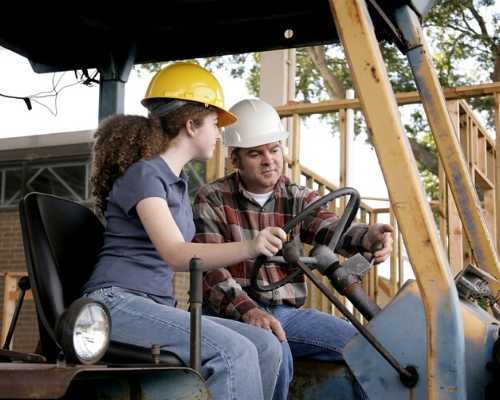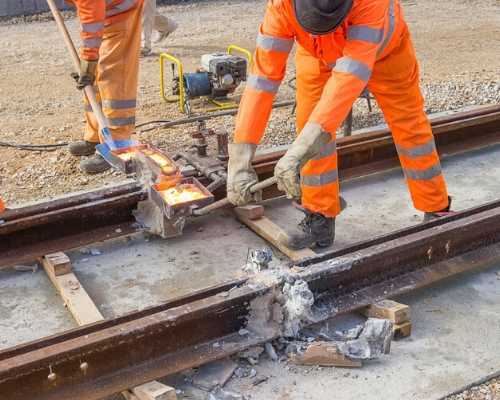6 Minute Read
December 20, 2019
0%
It’s a brand new decade and we’re kicking it off right with some good industry news for a change. From a resurgence of educational and trade programs for construction professionals to more infrastructure projects moving closer to reality to trends to watch, here’s a look at some of the stories we were following this past month:

Several news stories in recent weeks have touted new programs for education and training in the construction trades throughout the United States. In Huntsville, Ala. for instance, the North Alabama Building Academy opened Jan. 16. The facility will offer qualified high-school students (ages 17 or 18 and close to graduating) up to eight weeks of free training and education. Among the topics covered: safety, blueprint reading, tools and power tools and construction math. Similar programs in Michigan, Ohio, Wisconsin and other communities across the United States have been launched for high school and college-level students over the past six months. Many of these opportunities turn into paid work placement or apprenticeships. Construction Dive noted a recent study by the Illinois Economic Policy Institute, in conjunction with the University of Illinois at Urbana–Champaign's Project for Middle Class Renewal that showed that construction apprenticeships were leading to higher average pay than many college degrees in Illinois. Meanwhile, St. Louis, Mo. contractor Up Companies (UPCO) is taking another, rather unique approach to attracting younger professionals to the construction trades. The company recently teamed with music artist Howard “Chingy” Bailey Jr. to produce a music video, spoofing the hit song “Old Town Road” by Lil Nas X. The UPCO version, “Old Construction Road” was created to bring awareness to construction as a viable career path, said company president Michael B. Kennedy, Jr.
The Takeaway: There has been a lot of talk in the industry in recent years about putting weight behind efforts to revive trade programs, education and apprenticeships that were largely shuttered during the last recession. Now we’re seeing some real action and positive results! The skilled labor shortage has been a significant issue in construction for some time and any avenue to boost recruitment for the next generations of workers is a welcome one! Of course, these younger generations are very tech-savvy, so contractors should absolutely be modernizing their operations and touting the technology powering modern construction as a competitive hook. And, oh yeah, serious kudos to UPCO. If you haven’t checked out their video yet, do so below. It’s fantastic!

A 10-year plan to expand critical rail service across Virginia and into the Washington D.C. area announced in late-December by Virginia Transportation is being called a “game changer” for transportation in the region by rail and environmental advocates. Details of the at least $3.7 billion plan are still being worked out, but is expected to include a new rail bridge over the Potomac River, new track lines between Washington D.C. and Richmond, Va., and the purchase of hundreds of miles of passenger right of way from CSX. The Washington Post noted the rail plan would significantly expand rail service, allowing Amtrak to double the number of trains operating in Virginia and expand the Virginia Railway Express service to the nation’s capital.
The Takeaway: This is great news for commuters in and around the D.C. metro area, as well as for civil and rail-line contractors, as this is a significant project. We’re seeing more and more infrastructure projects coming to fruition, led largely by pushes and the state and local level. The potential for a sweeping federal infrastructure bill to pass in Congress still exists, though it has been back-burnered for years now as political divides continue to seize headlines. Should a federal plan ultimately get approved, it could infuse more than $1 trillion into communities across the United States for major projects including highways, bridges and utility projects. Of course, these projects come with much more stringent demands, and contractors that have modernized their operations to work in real time will be best positioned to win this lucrative work.

Construction Dive, which over the past few years has become a significant industry source for news and trends in the AEC industries, gave its take on five key ways construction will evolve in the year ahead. The article points to more scrutiny of structural design and safety processes by government agencies, insurance companies and others in the wake of several high-profile accidents and structural flows; increased adoption of more efficient building methods like modulization and prefabrication; more diversity among future generations of construction professionals; and continued automation of processes through technology — without negatively impacting jobs. “Contractors seem primed to welcome more automation, because it seems increasingly inevitable that jobsite and back-office technologies will integrate,” the article noted.
The Takeaway: The article hits the nail on the head in terms of the trends to watch in 2020 — especially with automation. With once forward-looking technologies like robotic construction processes, autonomous vehicles and virtual reality becoming actual reality, contractors are starting to embrace the notion of automated construction processes. On the back end, modern construction software is already driving the digitization and automated workflows of the data and documents driving construction processes. As this digital transformation advances, we’re entering a period of data transformation in the construction industry, where contractors are taking advantage of the cloud and the latest business intelligence tools to drill deeper into data analytics, developing new industry benchmarks and richer data that will further fuel and drive automation in the industry.
Want more takes on news and issues permeating the construction industry? Be sure to subscribe to our blog for the latest trends and industry news, or visit viewpoint.com to learn how leading-edge technologies can help grow your construction operations.
6 Minute Read
December 20, 2019
6 Minute Read
December 3, 2019
6 Minute Read
October 30, 2019